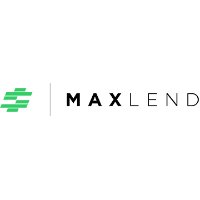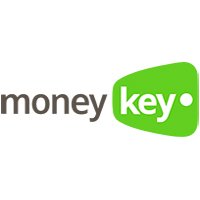Types of Loans
A loan is a fixed value of money that an individual takes from a creditor intending to repay it fully over time, with some fees accrued throughout the loan period. The value that you may get from lenders varies typically contingent on some aspects, like your credit history, debt-to-income ratio, your monthly earnings, the lender you choose, among various other factors. There are many types of loans you may apply from lenders and understanding the features of these credits helps you to select the appropriate lend for your needs.
The lend you borrow can be used to meet various needs such as financing for a start-up, buying a new auto, funding a home, etc. But with so many different types of loans, which one is ideal for your needs?
We are going to discuss different types of loans, highlight some tenets for loan comparison, show you how to get a loan easily, and finally tell you what it takes to get safe loans.
Personal Loans
Traditional banks typically provide personal credits, and they can be utilized to meet almost any need – from settling hospital bills to purchasing a new sofa. These lends don’t need any collateral, but their value is not so big, typically reaching a few thousand dollars.
However, that doesn’t mean that lenders will approve the credit for you without doing any initial checks. They will need proof of your suitability of recompensing the money borrowed. As such, they may ask for your income proof or any other form of verification.
The best thing about these credits is that when you apply, you can know the outcome within a few days, and if approved, the financing doesn’t take a long time.
However, there is a dark side to this credit. The rates are ridiculously high compared to the conservative loan types.
Another limitation is that the credits offer a short term that renders them useless for folks looking for larger sums. Practically, personal credits are ideal for folks looking for smaller amounts to repay within a couple of years.
Small Business Loans
These types of loans are commonly intended for small business owners or start-ups. However, you can only receive them if you have a viable business plan. They are typically provided by the Small Business Administration (SBA) or traditional banks, though nowadays you can apply online from online financiers.
Some financial institutions need a guarantee, usually collateral to secure their lend in case your venture fails. The amount given might be up to millions of dollars, contingent on the size and the type of the venture.
The rates charged are determined by the lending institution. Also, the term of credit repayment varies, but it is generally between five and twenty-five years.
Cash Advances
Cash advances are customarily provided by credit-card firms and expected to be paid off within a short time. They are typically called short-term lends. Though they are hustle free to get, they have a lot of drawbacks:
- The credit value is usually small, and that renders them useless for people looking for more extensive loans.
- High-interest rates and sometimes some hidden fees.
- Any tax has been deducted.
They are the best alternatives when you require quick cash. But because of these downsides, you should consider them only when you have exhausted all other options available to you.
Home Equity Loans (HEL)
With the HEL, an individual borrows against the equity they have created. The credit obtained can be utilized in various ways, but in most cases, they are used to consolidate debts or home remodeling. The rates are friendly as well. Besides, it offers flexible terms of payments, usually ranging from fifteen to twenty years. As such, they are incredible options for borrowers looking for colossal sums of money with reasonable interest rates.
The limitation of HEL’s is that placing your home as collateral can be catastrophic, in the event you evade payments of the mortgage and the bank has to resell your home to recover its money.
Home Equity Line of Credit (HELOC)
It is the same as HEL only that in this one, you can take the lend, repay a certain proportion of the sum borrowed, and take more. That is why it is popularly known as a revolving line of credit.
The limitation of HELOCs is that debtors can request for more cash even with existing debt, they might be tempted to borrow more and more. In the end, the amount gets over their heads, together with the interest rates. That’s the moment the suitability for these lends starts to fade.
Loan Comparison
The process of applying to get funded can be daunting. You ought to follow specific criteria to get the amount you require. It is a step by step undertaking, and you must ensure that at every stage, you get things right. One of the main steps is determining the right loan to pick.
With so many different types of loans, what are the criteria for selecting the finest one to meet your financial needs? Definitely, you must gauge them. But the question remains, which indexes do you use in your loan comparison? That is what we are going to explore here.


Steps to Loan Comparison
One thing that you must do when comparing lends to get a reasonable credit is research. During the research, you may use the checklist below to narrow down your potential list and segregate the best ones for the next screening.
- Know the kind of lend you require.
- Find out the sum you need to request.
- Find out the total APR charged on the principal. Know whether the rates are compounded and if they are how regularly?
- Know how much you would be eligible to pay monthly. You can utilize an online loan calculator to find out how much interest rate and monthly installments you would pay if you apply for a particular sum of money.
- Find out with your lender whether there is any late installment payment fee.
- Does the lender offer a grace period? A grace period is a time allowed by the financier for the debtor to pay the installment after the lapse of the agreed period without charging late payment fees.
- What are the consequences of defaulting the credit?
- After how many missed payments does the creditor consider the borrower as a defaulter? For most lends, if you go for nine months without making any installments, you are considered a defaulter.
- Know whether the financier charges any fee for early repayments.
- Find out about the laws governing the entire process of application and repayments. Some loans have capped interest rates contingent on your location. Ascertain that the terms you agree upon are in line with the federal laws and not illegally set by the financier.
- Before you sign any contract, ascertain you have gone through the fine print and understood everything. Where you don’t comprehend, seek clarification from your creditor or his representatives.
How to Get A Loan
People know that one can borrow finances, however, they are ill-informed of what to expect. The process of loan application is not a straightforward undertaking, especially if you haven’t borrowed money earlier from a monetary organization. Slight mistakes can be costly and result in denial of your loan request. So, if you want to apply, do your research to know what to expect, and the things you should do before getting into the process itself.
Know the Kind of Credit You Want
First things first. Find out what you want. Generally, the kind of credit you want will be dictated by what you want to use the money for. The most prevalent loan types include:
- Automobile loans are typically used to purchase a car.
- Mortgage credits used for purchasing a property.
- Personal loans can be utilized for various purposes.
- Business loans used for start-ups or growing a venture.
- Study credits are designed for students.
With this in mind, it will be easier to find a lend appropriate for you. Getting the correct credit maximizes chances of getting appropriated for the credit you apply for.
Choose the Place to Borrow
You may not get various avenues depending on the type of lend you need. Not all lenders offer study loans or mortgages. If you are looking for a study loan, start from your college and know whether there is any you can apply for.
You can get various credits from commercial banks and nonprofit organizations. Compare different lenders, looking at the terms and rates offered by each. However, don’t underestimate other financial platforms, such as peer-to-peer borrowing and online lenders. You may also consider getting donations from family members and friends. However, though this is an easier way to get some credit, be cautious when dealing with family and friends as it can lead to serious misunderstandings.
Know Your Credit
Lenders are usually attracted and confidence in lending their money to people with strong credit ratings. Your credit evaluation also influences your loan greatly. Therefore, ensure you are aware of your credit before commencing on your applications. You can access it from credit reporting organizations such as Experian, Equifax or TransUnion. If you don’t have much you can show your lenders in terms of your creditworthiness, you may consider working on it first. Alternatively, you can try your luck in bad credit online financiers.
Understand What You Are Getting Yourself Into
You might have completed most of the key preliminary work. But, before you apply for the amount you need, learn how the lending and borrowing operates. You may want to know more about how much you will need to pay as installments; the interest rate charged and the term. Know how you will pay for it, either via the bank or electronically.
You can establish good foundations of your credit by using loan calculators to run some calculations, which will help you make a coherent decision.
Finally, Apply for The Credit
Now you have done almost all the legwork. You are prepared to go for your credit once you have:
- Selected the lend you desire,
- Chosen the best creditor,
- Assessed your credit history, and
- Run the calculations.
At this juncture, approach the lender you have chosen and apply. The process is straightforward; just let your potential creditors know that you need to borrow some cash. Elucidate to them how you plan to use the money(optional). They will give you the way forward.
In the form, you would be required to put in your financial and personal credentials— for instance, your ID, SSN, and some information concerning your income and outstanding debts.
Safe Loans
Indisputably, a loan can be your savior during your financial hiccups. However, you might also find yourself in a vicious cycle of poverty due to making the wrong financial decisions. So, to get safe loans, you need to borrow responsibly, and that is what we will explore here. There are some issues you should be aware of to strengthen your financial standing:
- Revolving credits may appear pleasing for most borrowers, but they can be poisonous if you don’t tame your borrowing appetite. Non-revolving loans are better since you cannot borrow an additional amount unless you fully pay the outstanding credit.
- For safe loans, establish why you require the funds. You may either take funds for consumption or investment reasons. The purpose why you take the credit impacts the interest rates.
- Think about your credit. The credit rating is a vital determinant on the level of rates banks charge you. It also determines the credit rates. If you don’t have good credit, you may be charged more on rates, which is quite unhealthy for your financial backgrounds. It makes sense to wait and grow your credit before getting a lend.
- The interest rates. A couple of factors primarily determines these. If you choose the wrong credit, the rates can accumulate to sky-high levels that could make you incapable of repaying the value owed. So, choose credits with reasonable interest rates for safe loans.
- You must also think about how you would manage your credit. Before you take a credit, run your calculations, considering your debt-to-income ratio to ensure that the loan will not affect your financial fitness.
- Think about a substitute way you may repay the loan if you can’t pay it. Sometimes events can occur that paralyzes your credit repayment frequency. So, when you take credit, strategize how you will pay the amount owed in case this happens. You can set aside an emergency fund or get a side hustle as well.
- When you complete payments of the amount borrowed, do not stop there. The ride is not yet over. Follow up with credit management agencies to ensure that the payoff has reflected. That will affect your loan downwards or upwards depending on how hands-on you were on your loan repayments.









